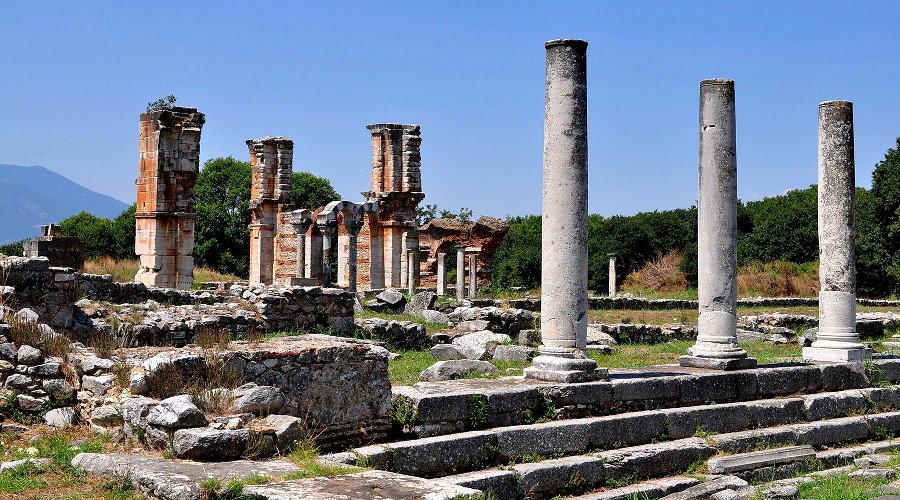Ancient Theatre of Philippi
The ancient theatre of Filippi is an important and remarkable monument. It is located at the feet of the acropolis and it is supported on the eastern wall of the city of Filippi. Eventhough it has sustained many changes throughout the centuries and some interventions so that it can host the Filippi Festival, it still preserves many of its original elements.
Opposite the ancient theatre of Filippi there are the ruins of the ancient city. The ancient city took its name in 356 b.c. after the father of Alexander the Great, Filippos the II.
The excavations have brought to light ruins from the Hellenistic, Roman, Byzantine and Paleochristian period.The octagon, the Roman forum, the paleochristian basilicas and parts of the city walls, are some of the most well known.
Archaeological Museum of Philippi
The museum includes four major collections of finds from the prehistoric settlement of Dikili-Tash, from the Hellenistic, Roman and Early Christian city of Philippi.
The most important exhibits of the museum are:
- Clay head of a naturalistic figurine from the prehistoric settlement at Dikili-Tash. The details of the anatomy, the hair and the ornaments, are finely executed. A large number of figurines belonging to this type are included in the prehistoric collection of the museum. Dated to the Neolithic period (5000-3000 BC).
- Hand-made pot from the settlement of Dikili-Tash, where a great number of similar vessels were found. It bears black painted decoration on a red surface. Dated to the Late Neolithic period (4000-3000 BC).
Fragment of a diagram attributed to Alexander the Great. It sets the limits of the rural area controlled by the city of Philippi, as well as the way in which its natural resources were to be exploited. - Funerary stele of Cleomoiris, which is dated to the 4th century BC according to the letter type of the inscription on its surface. The architectural remains from the Hellenistic city of Philippi have not been excavated because they are covered by the ruins of the Roman city, but a great number of Hellenistic grave stelae have been found on the site.
- Upper part of a statue of Nike. It was one of the corner acroteria of the West Temple in the Roman Agora. Dated to the 2nd century AD.
- Marble portrait of Lucius Caesar, the adopted son of Augustus. Dated to the Roman period.
- Votive relief of a Hero-Rider. The snake is a chthonic symbol of the Hero-Rider cult, which was widely spread in Thrace during the Roman period.
- The founder's (ctetor) inscription, preserved on the mosaic floor of the first christian chapel (eucterion) of Philippi.
- Parapet (thorakion) with a cross from Basilica A of Philippi. Decorated parapets were often placed between the columns of the Early Christian churches.
- Funerary inscription. It was found in the East cemetery which was located outside the East walls of the city of Philippi and was used in the Late Roman and Early Christian times. Dated to the Early Christian period.


